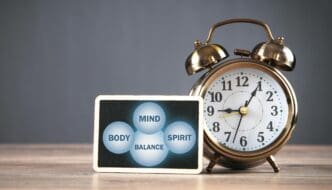Seasonal Affective Disorder, or SAD, is a distinct form of depression that affects millions of people in a predictable, cyclical pattern tied directly to the changing seasons. For most individuals, this means the onset of depressive symptoms in the fall, which persist through the darker winter months and only begin to lift with the arrival of spring’s longer, brighter days. While often dismissed as the “winter blues,” SAD is a recognized clinical diagnosis caused by a complex interplay of reduced sunlight exposure, disrupted brain chemistry, and the body’s internal clock. Effective, evidence-based treatments, including light therapy, psychotherapy, and medication, are available to help manage its debilitating symptoms and restore a sense of well-being.
What Exactly Is Seasonal Affective Disorder?
Seasonal Affective Disorder is not a separate mood disorder but rather a specific subtype of major depressive disorder, officially designated in the Diagnostic and Statistical Manual of Mental Disorders (DSM-5) as “Major Depressive Disorder with a Seasonal Pattern.” This clinical distinction is crucial because it separates SAD from the general feelings of lethargy or sadness many people experience during colder months.
To receive a diagnosis, an individual must meet the full criteria for major depression, and the depressive episodes must occur during specific seasons for at least two consecutive years. Furthermore, these seasonal episodes must significantly outnumber any non-seasonal depressive episodes the person has had over their lifetime. This pattern is the hallmark of the disorder.
While the most common form is fall-onset SAD, sometimes called “winter depression,” a less common variant exists. Spring-onset or “summer depression” involves depressive episodes that begin in late spring or early summer and remit in the fall. The symptoms of this subtype often present differently from its winter counterpart.
Recognizing the Signs and Symptoms
The symptoms of SAD can vary from mild to severe and often mirror those of major depression, but with a distinct seasonal timing. The specific presentation can differ depending on whether an individual experiences the winter or summer pattern of the disorder.
Symptoms of Winter-Pattern SAD
The classic form of SAD is characterized by symptoms that are often referred to as atypical for depression. Instead of insomnia and appetite loss, individuals frequently experience the opposite.
Common signs include pervasive low energy and fatigue, a feeling of being “weighed down,” and hypersomnia, which is the need to oversleep. Many also report intense cravings for carbohydrates and sugary foods, leading to overeating and subsequent weight gain. A strong desire to withdraw from social situations, often described as a feeling of wanting to “hibernate,” is another key feature, alongside feelings of sadness, hopelessness, or worthlessness.
Symptoms of Summer-Pattern SAD (Less Common)
In contrast, the rarer summer-pattern SAD often presents with more agitated symptoms. Individuals may experience significant trouble sleeping (insomnia), poor appetite, and weight loss.
Feelings of agitation, restlessness, and anxiety are more prominent in this form of the disorder. Increased irritability and even episodes of violent behavior have been reported in some cases. The heat and humidity of summer months are often cited as particularly difficult triggers for those with this subtype.
What Causes Seasonal Affective Disorder?
While the precise cause of SAD is not fully understood, researchers believe it stems from a combination of environmental and biological factors, with the reduction in natural sunlight during fall and winter being the primary trigger.
The Role of Sunlight and Your Biological Clock
The human body has an internal 24-hour clock, known as the circadian rhythm, which regulates the sleep-wake cycle, hormone release, and other important functions. This clock is heavily influenced by light exposure.
The reduced sunlight in fall and winter can disrupt this delicate balance. For people with SAD, this disruption can throw their circadian rhythm out of sync, leading to feelings of depression, fatigue, and changes in sleep patterns.
Brain Chemicals: Serotonin and Melatonin
Sunlight also plays a critical role in the regulation of key neurotransmitters, the brain’s chemical messengers. One of these is serotonin, which is vital for mood regulation. Research suggests that reduced sun exposure can lead to a drop in serotonin levels, which can directly trigger depressive symptoms.
Simultaneously, the darkness of winter increases the body’s production of melatonin, a hormone that regulates sleep. In people with SAD, the overproduction of melatonin can lead to increased lethargy and sleepiness, contributing to the overall depressive state.
Vitamin D Deficiency
Sunlight is essential for the skin to produce Vitamin D, and less sun exposure in winter can lead to a deficiency. Vitamin D is believed to promote serotonin activity, and some studies have linked low levels of this vitamin to symptoms of depression. While the direct causal link to SAD is still being investigated, a deficiency may exacerbate the condition.
Identifying Risk Factors for SAD
Certain factors can increase a person’s vulnerability to developing Seasonal Affective Disorder. One of the most significant is geography. The disorder is far more common in people who live far north or south of the equator, where there is a dramatic decrease in daylight hours during the winter.
Genetics also appear to play a role. Individuals with a family history of SAD or other forms of depression are at a higher risk. Similarly, a personal history of major depressive disorder or bipolar disorder can make one more susceptible to developing a seasonal pattern to their symptoms. Finally, SAD is more commonly diagnosed in women and typically begins in young adulthood.
How Is SAD Diagnosed?
If you suspect you have SAD, seeking a professional evaluation from a doctor or mental health provider is essential. A proper diagnosis is necessary to rule out other medical conditions that can cause similar symptoms, such as thyroid problems or mononucleosis.
The diagnostic process typically includes a physical exam and may involve blood tests. A thorough psychological evaluation will focus on your thoughts, feelings, and behavior patterns. The key to a SAD diagnosis is the timing and recurrence of your depressive episodes, confirming they consistently appear and disappear with the changing seasons.
Effective Treatments for Managing SAD
Fortunately, SAD is a highly treatable condition. A multi-faceted approach that combines several evidence-based strategies is often the most effective way to manage symptoms.
Light Therapy (Phototherapy)
Light therapy is a cornerstone of treatment for winter-pattern SAD. It involves sitting a few feet away from a special light box every day, which emits a very bright light—typically 10,000 lux—while filtering out harmful ultraviolet (UV) rays. This exposure mimics natural outdoor light and is believed to cause a change in the brain chemicals linked to mood.
For most people, a session of 20 to 30 minutes shortly after waking up is recommended. It is a simple, non-invasive treatment that can produce results within a few days to two weeks. It’s crucial to use a light box specifically designed for SAD and to consult with a doctor on the best way to use it.
Psychotherapy
Talk therapy is another highly effective treatment. A specific form of Cognitive Behavioral Therapy adapted for SAD (CBT-SAD) has shown lasting results. This therapy helps people identify and reframe the negative thoughts associated with winter and depression.
A key component of CBT-SAD is behavioral activation, which involves actively scheduling enjoyable and engaging activities. This strategy directly counters the natural impulse to withdraw and “hibernate,” helping to break the cycle of inactivity and low mood.
Medications
Antidepressant medications, particularly Selective Serotonin Reuptake Inhibitors (SSRIs), are often prescribed to manage the symptoms of SAD. These medications work by increasing the levels of serotonin in the brain.
In some cases, a doctor may recommend starting an antidepressant before the typical onset of symptoms in the fall to help prevent a depressive episode. The extended-release formulation of the antidepressant bupropion (Wellbutrin XL) is specifically approved by the FDA for preventing seasonal major depressive episodes.
Lifestyle Strategies to Complement Treatment
In addition to formal treatments, several lifestyle adjustments can provide significant support in managing SAD. Making a conscious effort to maximize your exposure to natural sunlight is paramount. This can mean taking a walk outside during your lunch break, arranging your home or office to sit near a window, or simply opening your blinds first thing in the morning.
Regular physical exercise is a powerful, natural mood elevator and can help alleviate feelings of fatigue and sadness. Maintaining a balanced diet and avoiding an over-reliance on simple carbohydrates can also help stabilize mood and energy levels. Finally, fighting the urge to isolate by staying connected with friends and family provides crucial emotional support during difficult months.
Looking Ahead: Managing SAD for the Long Term
Seasonal Affective Disorder is a real and challenging medical condition, but it is far from insurmountable. Understanding that your symptoms are the result of a biological response to an environmental trigger—and not a personal failing—is the first step toward recovery. With a proactive approach that combines established treatments like light therapy and psychotherapy with supportive lifestyle habits, it is entirely possible to navigate the changing seasons with resilience and maintain your mental well-being year-round. If you believe you are struggling with SAD, reaching out to a healthcare professional is a sign of strength and the most important step you can take.








